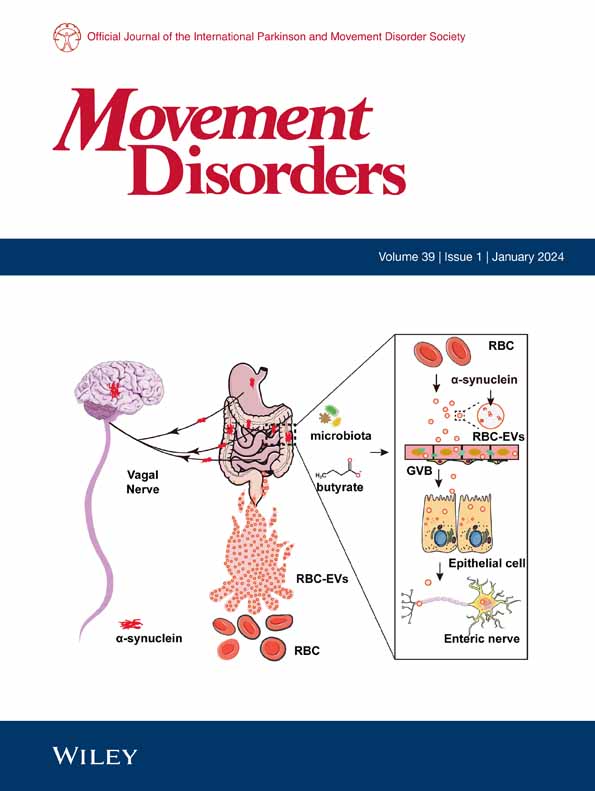Genetics Influences Telomere Length in Parkinson's Disease: A Study in Monozygotic Discordant Twins
IF 7.4
1区 医学
Q1 CLINICAL NEUROLOGY
引用次数: 0
Abstract
BackgroundParkinson's disease (PD) results from complex interactions among environmental, genetic, and aging factors. Telomeres, which ensure chromosome stability, naturally shorten with cell division, contributing to aging and cellular senescence. However, studies investigating telomere length (TL) in PD have produced inconsistent results.ObjectiveThis study aims to explore the relationship between TL and PD using a unique PD‐discordant monozygotic twin design, which minimizes confounding factors such as age, gender, and genetic background. We also examined the impact of PD‐related genetic mutations on TL.MethodsWe analyzed relative telomere length (RTL) in blood samples from 29 pairs of monozygotic twins discordant for PD. Data was stratified by disease duration, and we investigated the influence of genetic variants (基因对帕金森病端粒长度的影响:单卵异卵双胞胎的研究
背景帕金森病(PD)是环境、遗传和衰老因素复杂相互作用的结果。确保染色体稳定的端粒随着细胞分裂而自然缩短,导致细胞衰老。然而,研究端粒长度(TL)在PD中产生了不一致的结果。目的:本研究旨在通过一种独特的PD -不一致单卵双胞胎设计,最大限度地减少年龄、性别和遗传背景等混杂因素,探讨TL和PD之间的关系。我们还研究了PD相关基因突变对tl的影响。方法分析了29对PD不一致的同卵双胞胎血液样本的相对端粒长度(RTL)。数据按疾病持续时间分层,我们研究了遗传变异(GBA1和LRRK2)对RTL的影响。结果PD患儿与健康同卵双胞胎的RTL总体上无显著差异。然而,病程较长(≥8年)的双胞胎RTL显著下降(0.90±0.18∶1.07±0.24;P = 0.046),这在10年疾病持续时间中更为明显(0.85±0.18∶1.06±0.22;P = 0.015)。GBA1突变的PD双胞胎比未突变的双胞胎表现出更长的RTL,这一结果在非双胞胎GBA1携带者中得到了复制,并扩展到LRRK2携带者。我们的研究结果表明,衰老和细胞衰老主要驱动散发性帕金森病,而遗传形式与细胞通路的破坏有关,如溶酶体或线粒体功能。这些见解突出了遗传学在PD端粒动力学中的作用。©2025作者。Wiley期刊有限责任公司代表国际帕金森和运动障碍学会出版的《运动障碍》。
本文章由计算机程序翻译,如有差异,请以英文原文为准。
求助全文
约1分钟内获得全文
求助全文
来源期刊

Movement Disorders
医学-临床神经学
CiteScore
13.30
自引率
8.10%
发文量
371
审稿时长
12 months
期刊介绍:
Movement Disorders publishes a variety of content types including Reviews, Viewpoints, Full Length Articles, Historical Reports, Brief Reports, and Letters. The journal considers original manuscripts on topics related to the diagnosis, therapeutics, pharmacology, biochemistry, physiology, etiology, genetics, and epidemiology of movement disorders. Appropriate topics include Parkinsonism, Chorea, Tremors, Dystonia, Myoclonus, Tics, Tardive Dyskinesia, Spasticity, and Ataxia.
 求助内容:
求助内容: 应助结果提醒方式:
应助结果提醒方式:


